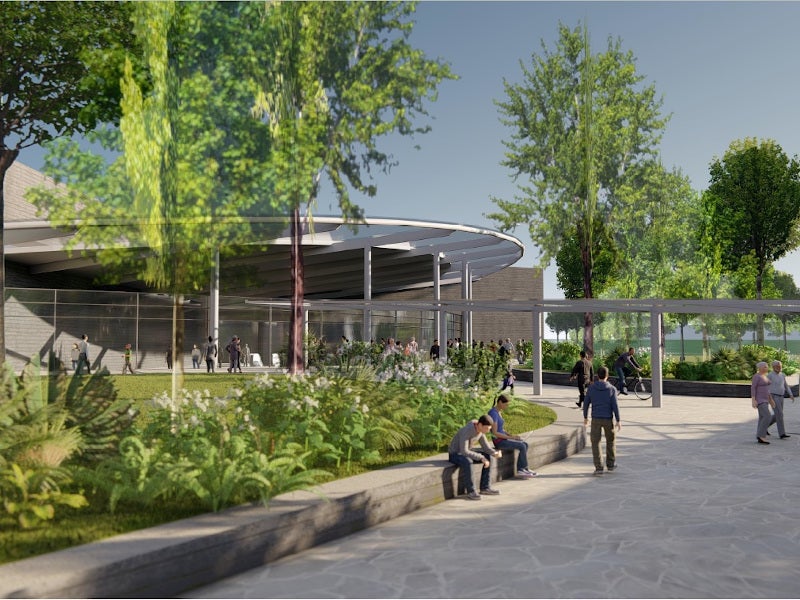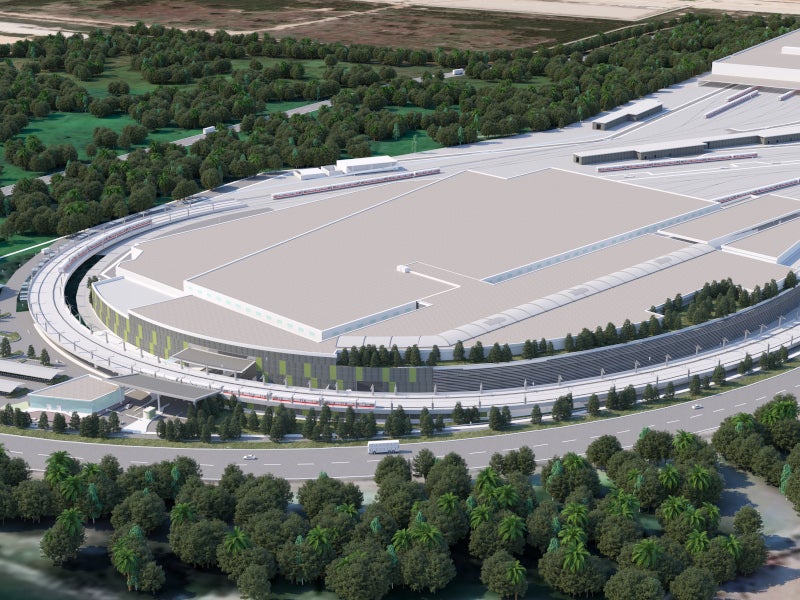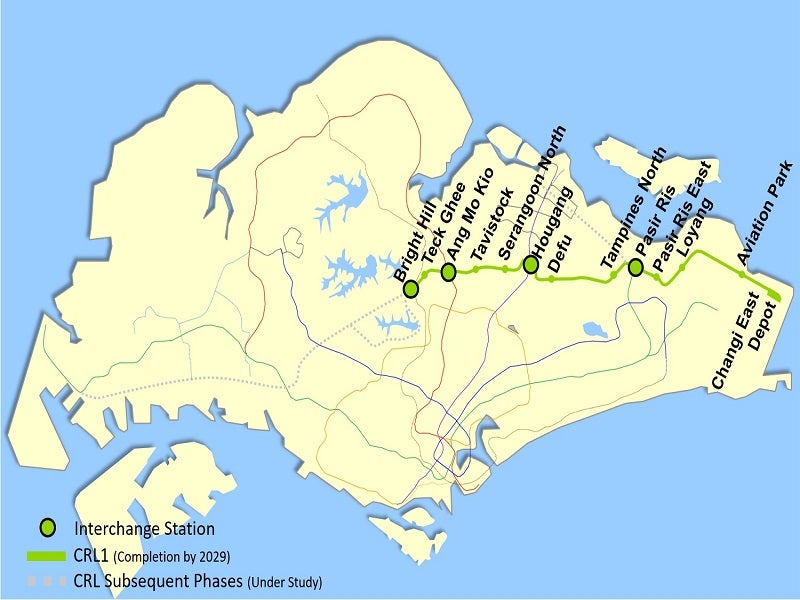The Cross Island Line (CRL) is a 50km-long, fully underground mass rapid transit (MRT) line being developed in Singapore, by Land Transport Authority (LTA) in cooperation with Singapore Land Authority (SLA).
CRL will improve connectivity and reduce the public transport costs by approximately 15%, upon completion. It will be Singapore’s longest underground line and eighth MRT line in the country.
The new line will connect major regions in the western, eastern, and north-eastern parts of Singapore, including Punggol Digital District, Changi region and Jurong Lake District. The construction will be carried out in three phases, with Phase 1 (CRL1) construction expected to start in 2020 for completion in 2029. The 29km-long CRL1 will include 12 stations between Bright Hill and Aviation Park.
LTA announced an extension to the future CRL to link Pasir Ris and Punggol, in March 2020. The construction of the CRL-Punggol Extension will begin in 2022 and the line will be opened in 2031. The extension will provide a direct connection between eastern areas such as Tampines North and Pasir Ris and north-eastern areas such as Sengkang and Punggol.
Cross Island line project development
The Government of Singapore announced the CRL project as part of its plans to double the country’s rail network by 2030 in January 2013.
LTA completed site investigations for two alignment options for the line near the Central Catchment Nature Reserve (CCNR) in June 2018.
The MRT line will be built 70m below the CCNR. LTA completed a comprehensive, two-phased environmental impact assessment (EIA) study. It engaged with different stakeholders and incorporated the feedback to mitigate the impact of the project.
Phase 1 of the EIA evaluated the ecosystem and physical conditions of the CCNR, while the second phase studied the environmental impact of the construction and operations of CRL.
Cross Island line route and ridership details
CRL will carry passengers from Changi to Jurong, passing through Loyang, Pasir Ras, Hougang, Ang Mo Kio, Bukit Timah, Clementi, and West Coast stations. The line is expected to have a ridership of at least 600,000 passengers a day, with the figure projected to increase to more than one million in future.
The first phase of the MRT line will connect various residential and industrial regions such as Ang Mo Kio, Hougang, Defu, Tampines, Pasir Ris, and Loyang.
The MRT line will also provide access to recreational areas such as Bishan-Ang Mo Kio Park and Changi Beach Park.
The 7.3km-long CRL-Punggol underground extension will include four stations, namely Pasir Ris, Elias, Riviera, and Punggol. The extension will benefit more than 40,000 households and reduce travel time between Punggol and Pasir Ris from 40 minutes to 15 minutes.
The extension will comprise three interchange stations, which will facilitate easy transfers between the East-West Line, North-East Line and Punggol LRT while providing alternative travel options for daily riders.
Infrastructure
The government will partially acquire eight properties to pave the way for the construction of CRL1 and related road works.
The acquisitions will involve boundary walls, subterranean spaces and green verges. The process will not affect existing buildings.
The project will also involve the construction of a new 57ha depot at Changi East. The depot will feature support and maintenance facilities for up to 80 CRL trains.
Project benefits
CRL will ease travelling across eastern and western parts of Singapore and reduce traffic congestion on the existing East-West Line while providing an alternative option to commuters.
The Cross Island MRT Line (CRL) will improve the accessibility, connectivity, and coverage of the rail network of Singapore. It will offer connections to major radial MRT lines and serve as a key transfer line that complements the orbital Circle Line.
The direct alignment option chosen for the project is expected to reduce construction costs by approximately S$2bn ($1.46bn) and decrease travel time by six minutes per passenger per trip.
Contractors involved
Tritech Engineering & Testing (TET) (Singapore) and Ryobi Geotechnique (Ryobi G) International were appointed to conduct site investigation works for the direct alignment option under the CCNR.
Geophysical Services (GSS) was selected as a subcontractor to support Ryobi G in performing geophysical survey works within the CCNR.
Environmental Resources Management (S) (ERM) performed a detailed study to assess the potential impact of the CRL on the environment.










